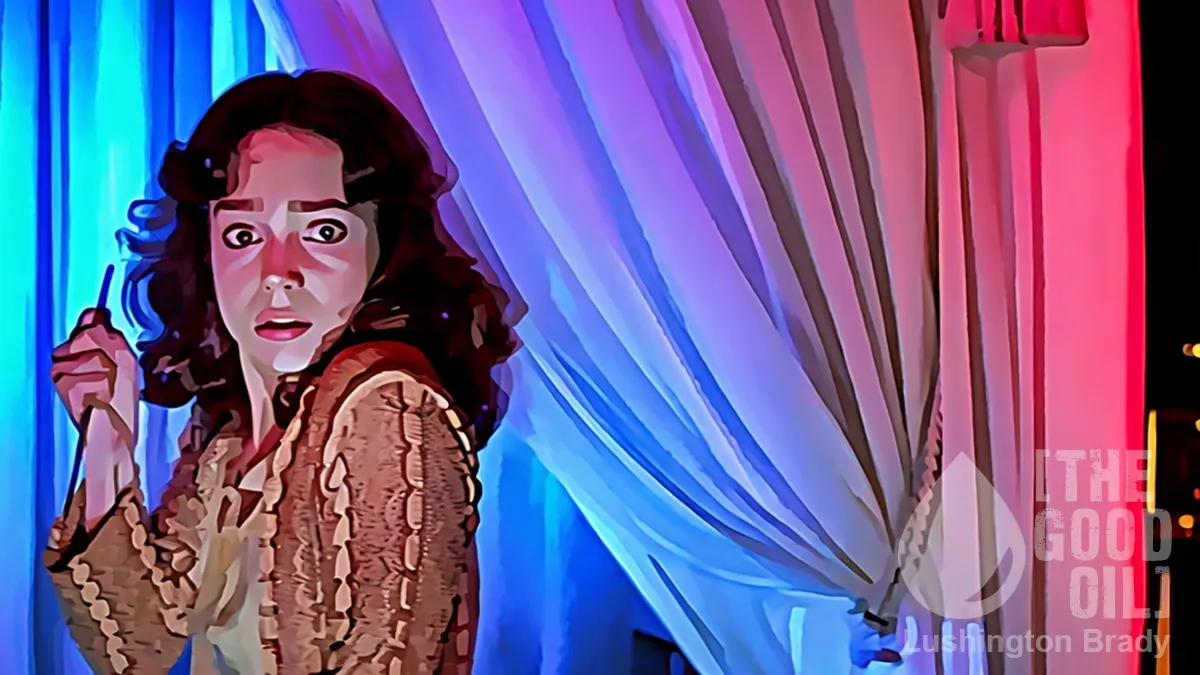Jon Miltimore
Jonathan Miltimore is the Editor at Large of FEE.org at the Foundation for Economic Education.
When I was seven, my class was taken to an auditorium in our elementary school. There was a projector in the room, and we packed in on the floor, criss-cross applesauce, with children in other classes. The lights were turned off, the projector began to roll, and a movie played.
I’m not sure why I remember that day so clearly. Maybe because it was the first time I’d ever watched a movie in school, or perhaps because it was the movie we watched: The NeverEnding Story.
I’ve always considered The NeverEnding Story to be one of the most imaginative children’s movies ever made. Directed by Wolfgang Petersen, the film, which turns 40 next year, was a box office hit, raking in $100 million on a $25 million budget. This is one reason I was surprised recently when I asked a roomful of people if they’d seen the movie, and most had never heard of it.
That’s a shame, because the film is not only enjoyable, but carries a message young people desperately need today. But I’m getting ahead of myself.
The NeverEnding Story begins with a young boy named Bastian discovering a mysterious book in a bookstore after he takes flight from a group of bullies who have a fondness for throwing shy kids into dumpsters. After arriving late to school, Bastian decides to skip class and begins to read the book in a secluded (and somewhat creepy) storeroom at his school.
This is when things get interesting. The movie switches to a story-in-a-story format, with Bastian (briefly) reading in voiceover about a land called Fantasia that is under attack from a mysterious force called The Nothing. Soon the voiceover stops, and the point of view switches to a boy named Atreyu, a warrior tasked by the Empress of Fantasia to discover what The Nothing is and how to defeat it.
Not long after, Atreyu rides off on his horse Artax (*sniff*) to begin his quest, and soon viewers begin to realize that the lines between Fantasia and Bastian’s reality are not what they seem, and we begin to sense that Bastian’s involvement is crucial to saving Fantasia (and perhaps himself).
This last part was always the most interesting part of The NeverEnding Story. Though the film is full of visually stunning landscapes, contains a wonderful score, and is packed with adventure, it is the blurring of lines between fiction and reality that leaves viewers thinking after the movie is over.
And the blurring lines do not end with Bastian, Atreyu, and Fantasia.
‘It’s Like a Despair, Destroying This World’
I’ve watched The NeverEnding Story at least two dozen times in my life. (Before you begin to think I have issues, I should mention I have three children.) And at some point I began to realize (or suspect) what The Nothing is.
The Nothing, as mentioned, is a force that is consuming Fantasia—but it’s unclear exactly how.
Early in the movie, we encounter several characters on their way to the Ivory Tower—home of the Empress, the ruler of Fantasia—who learn they are all traveling to the same place, for the same reason: The Nothing is destroying their home.
Though we learn from the characters that The Nothing is destroying their homes, the method is vague. A giant rock-creature called Rock Biter explains to his fellow travelers, including a dwarf named Teeny Weeny who rides a racing snail, how all the delicious rocks in his land began to disappear.
Rockbiter: Near my home, there used to be a beautiful lake. But then… then it… it was gone.
Teeny Weeny: Did the lake dry up?
Rockbiter: No. It just wasn’t there anymore. Nothing was there anymore. Not even a dried up lake.
Teeny Weeny: A hole?
Rockbiter: A hole would be something. No, it was… nothing. And it got bigger, and bigger. First there was no lake anymore, and then finally… no rocks.
Soon after this conversation, viewers soon get a glimpse of The Nothing, which appears as a violent storm that sucks up everything in its path. Rock Biter and his friends are able to escape (for now), but it’s unclear at this point what this mysterious force is.
We soon get a better description, however.
A Search for Meaning
After Atreyu has traveled across one side of Fantasia to the other trying to discover what The Nothing is and how to defeat it, he comes across G’mork, a wolf-like villain who admits he is trying to help The Nothing.
G’mork explains that Fantasia is a land of human fantasy made up of the hopes and dreams of people on a distant planet, and Fantasia is dying because humans are beginning to lose hopes and forget to dream. This is the fuel of The Nothing, we’re told. Then Atreyu asks G’mork the million dollar question: “What is the Nothing?”
G’mork’s response is telling. “It’s the emptiness that’s left,” the villain replies. “It’s like a despair, destroying this world.”
Because the lines between Fantasia and Earth are blurred, it’s clear that the despair G’mork describes exists in both Fantasia and earth, and a closer look at the film suggests they stem from the same source: nihilism.
Broadly defined, nihilism is the total rejection of religious and moral principles, and the belief that life has no meaning.
The Nothing is basically a metaphor for nihilism. It’s a force that represents the consuming despair of people who are losing not just their hopes and dreams but their meaning. The film hints that this is a condition that now afflicts Fantasia.
When Atreyu finally gets through the Swamps of Sadness (get it?) and meets Morla, the Ancient One, he does not find what he expects. Instead of finding a wise being who can tell him what The Nothing is and how he can defeat it, Atreyu discovers a giant turtle-like creature in need of Prozac. Far from being helpful, Morla is cranky and so depressed he literally wants to die.
“Die? Now that, at least, would be *something*,” he tells Atreyu.
We have a clue as to why Morla is so miserable. Though wise, Morla has no sense of meaning. Many of his answers to Atreyu are prefaced with the line, “Not that it matters, but …”
This is a soul steeped in nihilism. And even though Morla knows a way to help Atreyu defeat The Nothing, Morla refuses—because he says nothing matters. Only after Atreyu tricks the depressed turtle—”That’s not true. If it didn’t matter to you, you could tell me”—does Morla tell the clever young warrior that the Southern Oracle holds the answer he needs.
‘People Who Have No Hopes Are Easy to Control’
It doesn’t take a doctorate in philosophy to realize that nihilism is a recipe for unhappiness. Friedrich Nietzsche warned about the dangers of nihilism more than a century ago. Nietzsche may have famously declared God dead in 1882, but the philosopher worried that God’s (metaphorical) death left a serious chasm in the universe: how to find meaning in a world full of suffering.
Nietzsche’s solution to this problem was for man to treat his very existence as “a work of art,” which would create value and meaning in his life. This is good advice, as far as it goes. Life is a gift and should be lived as if it were a work of art.
The Neverending Story, however, shows the solution may not be so simple. (It’s also worth noting that Nietzsche himself went mad in 1889, supposedly after watching a horse being abused by its owner in the street.)
It’s important to remember that The Nothing is not the only threat in Fantasia. As mentioned above, G’mork is a creature in its service, and his goal is to stop Atreyu from completing his quest.
Unlike The Nothing, G’mork is a mortal creature. He’s flesh and blood. So why is he trying to help this destructive force? What does he stand to gain? The movie gives us a clear (and telling) answer.
G’mork explains to Atreyu (whose identity he doesn’t yet know) that he is “the servant of the power behind the Nothing” and that he was sent to kill the warrior who could stop it. Atreyu asks him why he would do such a thing.
“Because people who have no hopes are easy to control; and whoever has the control… has the power!” G’mork replies.
The film is telling us that there are forces in the world that want people in despair. That want people weak. That want people dependent and hopeless. Because people without hope and dreams are easier to control, and people who are easily controlled pose no threat to those in power.
Nietzsche’s solution to finding value in life was for the individual to live life like it’s a work of art, but nihilism—like The Nothing—has its servants. And these servants (wittingly or not) see individuals improving their lives through their free choice and independent action as threats.
If you doubt this, consider how many people (and who) are hostile to individuals taking everyday steps to improve their own lives. Things as simple as working out, waking up early, and self-help are attacked, as are people who call out the corrosive impact of government dependency.
Nietzsche might have believed that taking control of one’s life and turning it into a beautiful tapestry was the antidote to nihilism, but thinkers like Jordan Peterson who’ve preached such a message have found themselves targeted.
There’s a current of postmodernism that sees individualism as silly, and a distraction from policies “that would give the working class far more material security.” Yet The Neverending Story hints that true individualism is what has the power to defeat The Nothing.
Near the end of the movie, when the lines between our world and Fantasia begin to crumble, and The Nothing has swallowed almost everything, the Empress explains to Atreyu that Bastian has the power to stop it.
Then why doesn’t he do something? Atreyu replies.
“He doesn’t understand that he’s the one who has the power to stop it,” the Empress says. “He simply can’t imagine that one little boy could be that important.”
He ‘Who Does Not Feel His Own Worth’
Nearly 40 years after watching The Neverending Story in school, its message is finally clear to me.
A handful of postmodern philosophies—nihilism, pessimism, and materialism, chief among them—are destroying our world, because they are destroying our meaning.
The most terrifying challenge Atreyu faces in Fantasia is the sphinx, who we’re told will strike down anyone who tries to pass “who does not feel his own worth.” The parallel in our own world could not be more clear; government data show suicide reached a record high in 2022.
Fortunately, the power to stop the despair the Nothing brings exists. It cannot be defeated by an army or a government program, but it can be defeated by the Individual.
Only individuals can think and reason and act. Only individuals have the power to create art and life and beauty, and it’s through this that we create meaning in our lives (and a more beautiful world for others).
This is what the Empress means when she tells Atreyu that only Bastian has the power to stop the Nothing.
The power to defeat its despair exists in each of us, and a good place to start is to recognize that life is a gift and worthy of being treated as a work of art.
This article was originally published on FEE.org. Read the original article.









